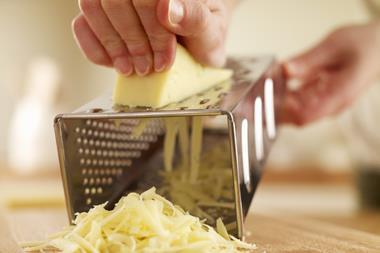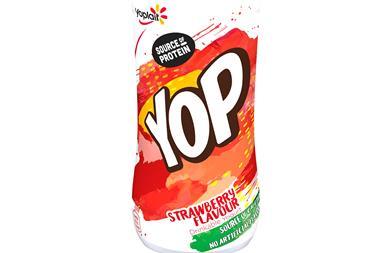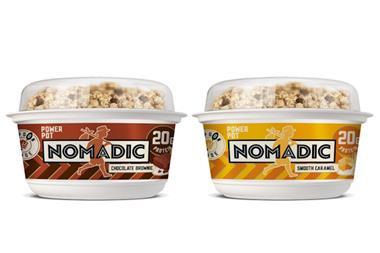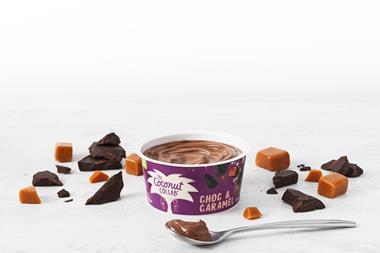Doom and gloom reports of the economic downturn may have dominated media headlines in recent months, but all is not lost. While the organic sector hasn’t got away completely unscathed, it is still basking in double-digit growth and experts are confident that the future holds promise. “The newspapers are on a run of bad news credit crunch stories and we have seen a small downturn in sales growth,” concedes Yeo Valley marketing director Ben Cull. “Last year the organic sector achieved 22% growth and this year we’re looking at about 10%.” But it’s not all bad news when you put things in perspective, he says. “If big categories see 1-2% growth then they’re pretty happy, whereas organic is enjoying figures that no one else is.” Industry analyst Organic Monitor’s director Amarjit Sahota notes that the category has made real progress within the convenience sector. “We have seen a significant increase in organic product penetration in convenience stores over the past seven years. Organic foods could rarely be found in convenience stores in 2001. However, most now stock organic milk, yogurts, chocolate, snacks and similar products.” Sahota’s comments are backed up by AC Nielsen, which claims that the organic market’s growth within the convenience sector is outperforming total market sales growth. For the 53 weeks ending August 9, 2008, organic within the convenience sector was growing at 12%. “Organic food has become a ‘must stock’, and is no longer a ‘speciality’ market,” says Cull. It’s important for convenience stores to offer consumer choice, adds Peter Rabbit Organics brand manager Katie Towers. “Since organic is no longer just a luxury, but an everyday requirement for many people, shoppers would expect to be able to purchase organic products in their local convenience store.” And now that big boys such as Heinz and United Biscuits UK (UBUK) have entered the sector, you can be pretty sure it’s a safe bet. “The organics category is now hugely profitable,” says John Alderman, marketing manager at Heinz Baked Beanz. “It is important to provide consumers with an organic alternative. Heinz Organic Baked Beanz has been extremely successful.” UBUK also has faith in the organic sector. “We launched McVitie’s Yumbles, our first organic biscuit product, earlier this year and it is building a good sales base,” says the company. According to Cull, there are three key consumer groups that organic products appeal to: old people looking to avoid ill health; people in their late teens and early 20s who want to keep fit; and new families. But before you rush to stock up on organic produce, you need to take into account that it may not be suited to your store. “First of all, retailers need to look at the demographics. There’s no point in stocking organic products if you don’t have the right regional profile,” claims Cull. Ali Gulami, owner of Maks News in Bethnal Green, London, agrees: “The success of organic is very much dependent on the area you’re in. Everyone around here cares very much about the environment, so they are keen to purchase organic goods.” Ahmed Saj, owner of Gallifords in Bristol, has also witnessed demand for organic. “It’s very popular in this area. We have a fresh produce and organic store in which all the groceries are organic. It sells well and I could do with a few more lines.” Rachel’s Organic marketing director Steve Clarke notes: “It’s not a universal cliché, but the organic trend is mainly Southern-based as the people there tend to be on a higher income. However, a proportion of those on a lower income are dipping into the sector – it’s not just for posh people!” And if you do decide to enter the organic arena, choosing what products to sell can be tricky. “Convenience retailers need to create space for organics without cannibalising sales of other products,” says UBUK spokeswoman Jo Kent. “The success of organic products depends on local demand, so retailers should test their customers and see whether a simple range will suffice or whether there is the opportunity for a greater focus.” It’s best to start with a miniscule range, claims Sahota. “Convenience stores have limited shelf-space so it is very important to introduce organic products that are in high demand from consumers. I would suggest products such as organic milk, yogurts, soya milk, snack bars and chocolate.” Cull is of a similar mindset. “The best way to start is to set up a small organic range – we’re talking about five or six lines in dairy. Milk is a big area for c-stores, so I’d recommend two SKUs covering whole and semi-skimmed milk, a fruit yogurt, a natural yogurt and a kids’ yogurt.” The consensus seems to be that if you are going to sell organic products, then they need to be displayed alongside their regular cousins. “We believe one of the first things to do is recognise that organic dairy products now appeal to anyone walking through the doors of the average store,” says Cull. “Don’t put them in an organic ghetto; merchandise them in your existing dairy display.” Clarke at Rachel’s Organic agrees: “The mantra for me is to do what you can to stock best-selling organic products and display them next to conventional products. If you have organic next to what people buy normally, customers may well view it as an upgrade.” He claims that one of the main challenges is keeping your SKUs up to date. “It’s a constantly evolving area – three years ago organic yogurts were 5% of the category and now they’re 10. Retailers need to rely on quality information from wholesalers and manufacturers to ensure that they move with the times.” Customers can also provide crucial information, says Ali, particularly when it comes to displaying organic products. “We used to have tins of organic beans at the back of the store, but following customer suggestions we’ve now moved it to the front and that has really helped to increase sales,” he claims. Another other major hurdle to overcome when selling organic products is the increased cost for consumers. “Organic foods are inherently more expensive than conventional foods, and the challenge is to keep the price premium as small as possible,” says analyst Sahota. Good communication can help customers to accept the extra cost, adds Peter Rabbit Organics’ Towers. “It can be difficult to get the message across, but once shoppers know the story behind a product they are usually prepared to pay more,” she claims. “Adequate signage will ensure that people are aware of organic products.” Sahota also believes that advertising can help up the profile of the category. “Convenience stores can step up marketing activities,” he says. “One of the reasons why supermarkets have been successful with organic foods is that they have invested in marketing organic lines: raising consumer awareness by in-store promotions, merchandising, giving product information and so on.” Ali has certainly found this route to be fruitful. “It’s all about advertising for me,” he says. “I stick posters on my car, which is parked outside the front of the store advertising the kids’ organic brands. Also, I ask customers for their opinion and what they want and what to improve. A lot of mothers prefer organic because they don’t want any unnecessary chemicals in food.” The debate over whether organic products are ‘better for you’ than their standard counterparts is still raging, but groups such as the Soil Association are adamant that organic is the way forward. “To put it simply, organic food and farming is better for consumers, better for farmers, better for animals, better for wildlife and better for the planet,” says spokeswoman Clio Turton. “Only 32 of the 290 food additives approved for use across the EU are permitted in organic food.” Peter Rabbit Organics is also enthusiastic. “There are lots of studies under way at the moment investigating the health benefits of organic food compared with conventional, and we hope that in the near future we can start making some approved claims,” says Towers. “Organic is viewed as a short-cut through nutritional confusion,” says Clarke. “The more processed a product is, the less sure you are what’s in it. It’s about people making healthier food choices from a wholesome, rather than functional, perspective.” Cull adds: “There have been cases where standard products are tested and a cocktail of chemicals have been found in them. An organic carrot may not contain any more nutrients than a standard one, but you have the peace of mind that you know where it’s come from.” Regardless of the science behind the organic category’s healthy image, Ali has every confidence that it will continue to perform. “I think the organic sector in c-stores will continue to grow – it might just take over from standard products in certain areas.”
Related articles
More from Products
Unlimited Access + Newsletters
Register today to gain unlimited access to articles and to receive our great range of email newsletters.




























No comments yet